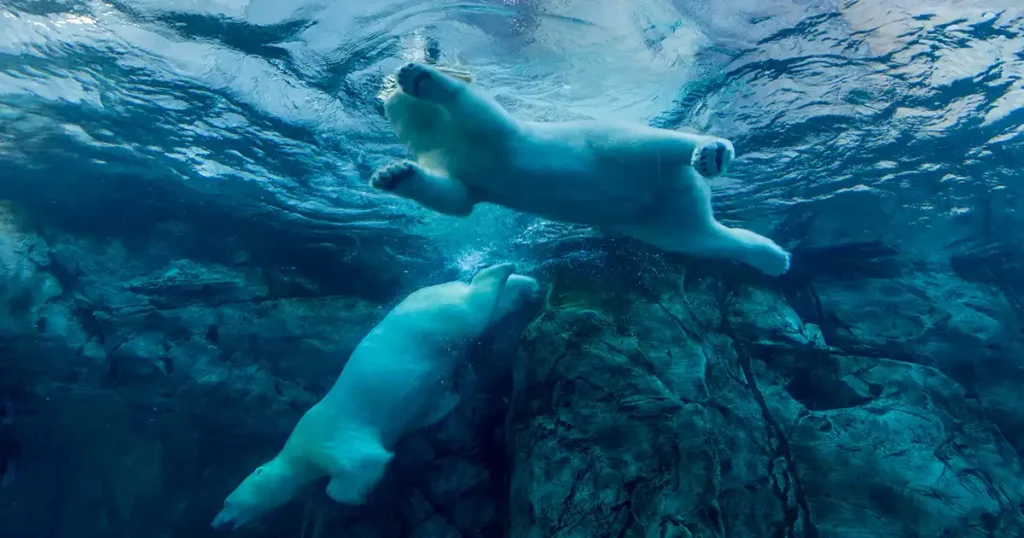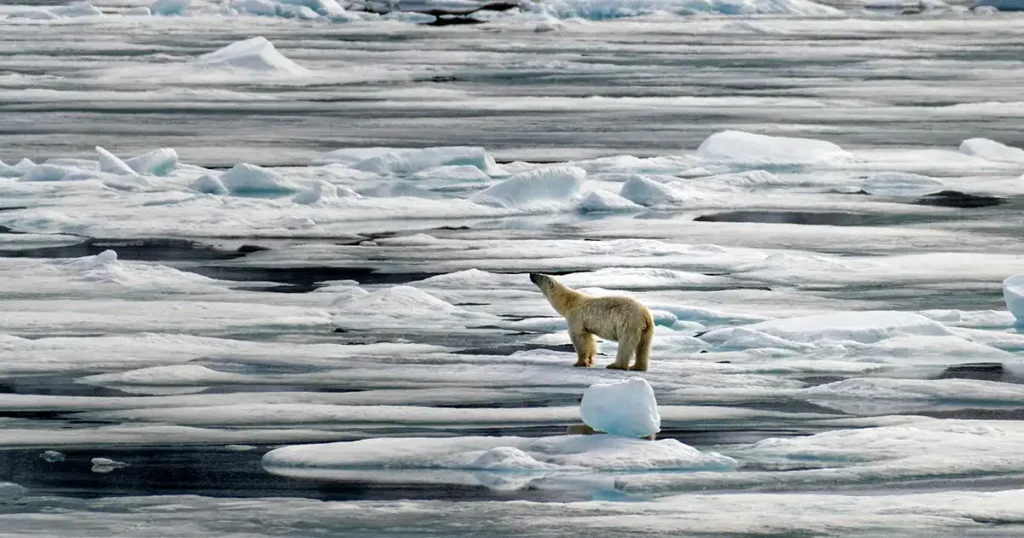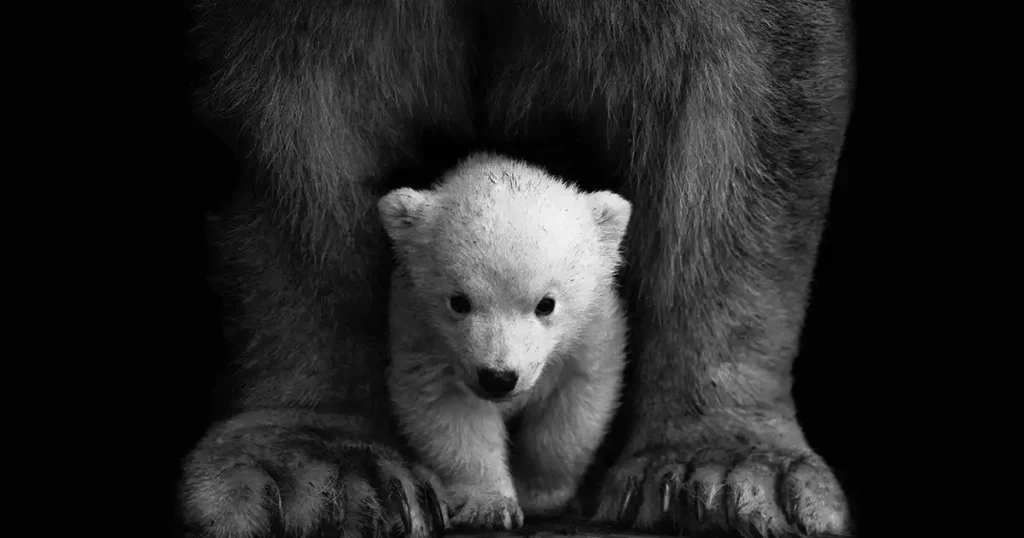Polar bears are majestic creatures of the Arctic, often symbolizing the raw power and beauty of nature. Yet, they are also vulnerable to the harsh realities of climate change. These impressive animals have fascinated people for centuries due to their unique adaptations to survive in one of the planet’s most extreme environments. In this article, we will explore 20 fascinating polar bear facts, shedding light on their lifestyle, behavior, and the challenges they face in the wild.
Polar bears (Ursus maritimus) are apex predators, primarily found in the Arctic Circle. Known for their thick white fur and massive size, they have adapted remarkably well to life in the frozen wilderness. Understanding polar bear facts not only gives us a window into their world but also highlights the importance of conservation efforts aimed at protecting them. Let’s dive into 20 amazing polar bear facts that will leave you in awe of these Arctic titans.
20 Amazing Polar Bear Facts
1. Largest Land Carnivore
One of the most well-known polar bear facts is that they are the largest land carnivores on Earth. Adult males can weigh up to 1,500 pounds (680 kilograms) and measure over 10 feet in length when standing on their hind legs. Females are smaller, usually weighing around 600 pounds (270 kilograms).
2. Expert Swimmers

Polar bears are not just land animals; they are also excellent swimmers. They can swim for hours at a time to travel between ice floes. Some have been recorded swimming up to 60 miles without rest. This ability is crucial for hunting seals, their primary prey.
3. Highly Insulated Fur
Another intriguing polar bear fact is their unique fur. Despite appearing white, polar bear fur is actually transparent. It reflects visible light, making them blend in with their snowy surroundings. Beneath their thick coat, they have a layer of fat that can be up to 4 inches thick, providing insulation in sub-zero temperatures.
4. Built for Cold Weather

One of the most interesting polar bear facts is how well-adapted they are to the cold. Their black skin absorbs heat from the sun, and their compact ears and tails minimize heat loss. This makes them well-equipped to survive temperatures that can drop as low as -40 degrees Fahrenheit (-40 degrees Celsius).
5. Powerful Predators
Polar bears are the top predators in their ecosystem. Their main diet consists of seals, especially ringed and bearded seals. They rely on sea ice to hunt, waiting by seal-breathing holes to catch their prey with a quick, powerful strike.
6. Solitary Animals
Most polar bear facts highlight their solitary nature. Except for mothers with cubs, polar bears tend to live alone, roaming vast distances in search of food. They are nomadic and can cover up to 1,000 miles (1,600 kilometers) in search of their next meal.
7. Long Lifespan
Polar bears can live up to 25-30 years in the wild, though many do not reach this age due to environmental hazards, scarcity of food, and human threats. This lifespan is one of the many polar bear facts that highlight their resilience, even in harsh conditions.
8. Sensitive Smell
A polar bear’s sense of smell is incredibly sharp. In fact, one of the most remarkable polar bear facts is their ability to detect a seal nearly a mile away (1.6 kilometers) and under several feet of compacted snow. This acute sense of smell helps them locate prey even in extreme Arctic conditions.
9. Ice-Dependent Hunters
Polar bears are dependent on sea ice for hunting, making it one of the most critical polar bear facts to consider when discussing their survival. They wait by the ice to catch seals, which come up to breathe through holes. As climate change causes sea ice to melt earlier and form later, polar bears are left with less time to hunt and are forced to travel longer distances for food.
10. Cubs are Born in Winter

Polar bear cubs are born in dens during the cold winter months. One of the most endearing polar bear facts is that female bears give birth to one to three cubs, usually in December or January. The cubs remain in the den, nursing on their mother’s rich milk, until they are strong enough to venture out in the spring.
11. Mother’s Incredible Dedication
Female polar bears are incredibly dedicated mothers. They typically stay with their cubs for about two and a half years, teaching them essential survival skills such as hunting and navigating the icy terrain. These mother-cub bonds are one of the most touching polar bear facts, showing a softer side to these powerful animals.
12. Conservation Status: Vulnerable
One of the more concerning polar bear facts is that they are classified as vulnerable by the International Union for Conservation of Nature (IUCN). Their population is in decline due to the loss of their sea ice habitat, driven by global warming. Conservation efforts are crucial to ensuring their survival.
13. Thick Blubber for Warmth
In addition to their dense fur, polar bears have a thick layer of blubber underneath their skin, which can be up to 4.5 inches (11.5 cm) thick. This blubber provides insulation against the cold and is an essential energy reserve during periods when food is scarce.
14. Paws Built for Traction
Polar bear paws are enormous, with the largest ones measuring up to 12 inches across. These large paws act like snowshoes, distributing their weight to help them walk on thin ice. This is one of the more practical polar bear facts that highlights their adaptation to their icy habitat.
15. Polar Bears are Marine Mammals
Surprisingly, one of the lesser-known polar bear facts is that they are classified as marine mammals, just like seals and whales. They spend much of their time on the sea ice, hunting for marine prey, and are superb swimmers.
16. Communicating with Body Language
Polar bears are mostly silent animals, but they communicate through body language and vocalizations when necessary. Mothers will growl to warn their cubs of danger, and males may vocalize when fighting for territory or a mate. These communication methods are crucial to their survival in the wild.
17. Threats from Climate Change
One of the most alarming polar bear facts is the effect of climate change on their habitat. As the Arctic ice melts due to rising global temperatures, polar bears are forced to travel longer distances to find food. This energy-intensive lifestyle is unsustainable in the long run, leading to malnutrition and declining populations.
18. Polar Bears Fast for Months

Polar bears can go for long periods without eating, especially in the summer months when sea ice is scarce. During this fasting period, they rely on their fat reserves. This ability to endure long stretches without food is one of the most incredible polar bear facts, showing just how tough and resilient they are.
19. Unique Hunting Techniques
Polar bears employ a range of hunting techniques to catch seals. They often use a method called still-hunting, where they wait silently by seal breathing holes, ready to ambush. Another tactic is stalking seals on land or in the water. These strategies make them highly efficient hunters in a challenging environment.
20. Polar Bears are Not Truly White
While polar bears appear white, their fur is actually made up of hollow, transparent hair shafts that reflect light, making them look white. Underneath, their skin is black, which helps them absorb and retain heat from the sun. This illusion of whiteness is one of the most surprising polar bear facts, underscoring how well-suited they are to their Arctic home.
You may also like:
- 57 Incredible Ancient Extinct Animals That Once Roamed Our Planet
- 20 Weirdest Animals in the World: World’s Strangest Animals
- 20 Interesting Facts about Star-Nosed Mole
- 20 Interesting Facts About Shoebill
- 20 Interesting Facts about Sloths
Final Words: Polar Bear Facts
Polar bears are magnificent creatures with unique adaptations that allow them to thrive in one of the most inhospitable environments on Earth. However, as we have seen through these 20 polar bear facts, they are increasingly threatened by the effects of climate change and habitat loss.
Understanding polar bear facts is not just a way to appreciate their beauty and strength but also a reminder of the urgent need to protect their fragile ecosystem. By supporting conservation efforts, we can help ensure that future generations can continue to marvel at the wonder of polar bears in the wild.
From their impressive size to their exceptional swimming abilities, polar bears continue to captivate our imagination. Learning about these 20 polar bear facts reminds us of the delicate balance of life in the Arctic and the need to take action to protect these incredible animals for years to come.



